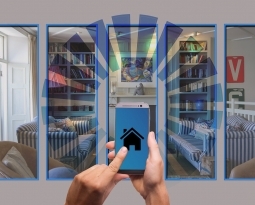3D Printing Could Transform the Eyewear Industry
Need a new pair of glasses? 3D printed glasses are a new phenomenon, which have many advantages over traditional glasses. For starters, they will allow eyewear companies to improve their business performance while decreasing manufacturing costs and waste.
As glasses are worn on the face and are seen instantly, customization is important for wearers. 3D printers can print many versions and designs without having to consider production volume-to-cost ratios. Printing costs for one pair of glasses are the same per pair as producing thousands. Therefore, each pair can be unique and additionally, the availability of a specific frame is increased.
Unlike expensive custom glasses, 3D printed eyewear does not require a mold and any errors can be easily corrected. The glasses are completely bespoke using a one-off production process. Customers can choose the style, colour and size. Production methods like laser sintering or lost wax metal casting ensure optimal finish. They can be precisely fitted to the wearer’s face in terms of size and dimensions, so it is no longer a one-size-fits-all approach. Furthermore, glasses can be printed on-site, rather than having to import from China, eliminating transportation costs and significantly reducing waiting times.
In terms of vision, traditional glasses require the lenses to be placed into the chosen frame, which can result in suboptimal lens performance from its impact on lens alignment. 3D printed glasses build the frame around the lenses, providing the best possible visual performance.
3D printing has the potential to completely transform the eyewear business. It has happened in other industries; the manufacture of 3D-printed hearing aids grew from 20 percent to almost 100 percent within two years.
Currently, drawbacks include strength and variety but these are continually being improved. Companies who are developing 3D printed eyewear can now apply for research and development tax credits. Qualified costs may include wages, supplies, research, testing and expenditure incurred for patent development. To check your eligibility for R&D tax credits, use our online eligibility test. Alternatively, contact us directly for further information.

















